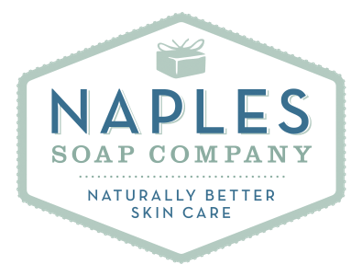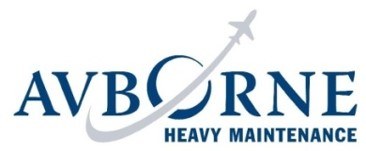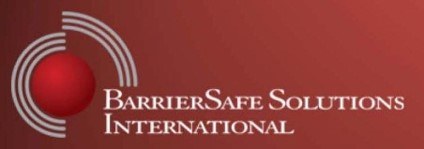Outward Facing Customer Focus: Needs, Wants and Expectations
June 8, 2021
“There is nothing more uncommon than common sense.” — Wile E. Coyote (actually it was said by Frank Lloyd Wright)
The most successful small and middle market businesses (even large businesses like Apple and ACME) have three very simple commonalities:
- Unrelenting Focus on the Customer. Those organizations that have matched their precious resources to customer needs ultimately prevail. Why? Because the customer-centric organization makes the day less about the inner workings of the enterprise, and carefully evaluates the outward impacts of how budgets are allocated, systems designed, people oriented and quality products and/or services delivered. The best and most profitable firms are less concerned about hierarchy and titles and other nonsense like personalized parking spaces and stroking managerial egos, and more about getting out there and delighting the customer, introducing every contact employee to the customer, and one of my personal favorite initiatives: ensuring every single employee has a business card.
You wouldn’t have a football team and only give uniforms to some of the players, right? A team needs to act, look, feel like one.
- Beating Expectations. Try to take a learning opportunity away from every encounter. My uncle rose from a new recruit selling shoes to a region manager with the old (and, good) Sears organization over a forty-six year career. He once told me a story of how in one of his stints he was in charge of mattresses and furniture. He referred to it as the UnderPromise/OverDeliver. He said when they’d planned on making a delivery on a Tuesday, they’d tell the customer they’d deliver on Thursday or Friday, they’d call the customer Monday with the great news that they could deliver on Wednesday. “Mrs. Smith” was delighted and all it cost the company to beat expectations was an extra phone call. And here’s the best one, “Mrs. Smith, remember that set of end tables you were thinking about? I have room on the truck that day and would be willing to deliver them for free and take 10% off the price.” Thus, why he and other people were fiercely loyal to Sears for many years (until they weren’t because Sears forgot about people), testament to the training and passion that once great organization was once able to instill in its employees. Yes, finding ways to innovate, beat expectations, and beat sales projections are often just a creative solution away. Find the everyday joy for the customer and give it to them. (On a side note, we should truly admire the HR person and/or recruiter who takes the time to get back to every applicant with at least an email, or a phone call, and the salesperson who didn’t get awarded the project calling back and asking what they could do better next time.) Three of the greatest expectation-beaters ever: answer the phone; return calls; show up on time. So few do it, so when you really stand out.
- Reputational Management. You can’t be a savior to others if you are yourself drowning. Your customers believe what you do and what you are, not what you say. Your organizational credibility must be carefully managed by making sure your employees are courteous, well-dressed and neat and clean, timely and well trained, have clear and accurate paperwork (everything from service orders, to receipts and billing, to brochures and handouts) and that your facilities are clean for meetings, branding prominently displayed, e.g. I knew of one pending merger in which one of the executives of the acquiring company was dismayed to find a very unkempt bathroom. Details matter. Take a hard look at hiring a LEAN and 5S expert (I recommend our own Jeff Swoyer and Tom Pesaturo from QORVAL Partners (qorval.com)) to streamline and optimize your processes, work flows, materials management, service queuing, and scheduling, inventory and data management. In addition, despite all of the things that you as an owner or manager need to control, you must make sure your stakeholders aren’t hanging you out to dry. Slowly paid vendors, disgruntled current or former employees, or bitter competitors can quickly erode the positive goodwill and “reputational currency” you’ve worked hard to accrue.
Here are just a few checklist items (in the form of a thinking outline) to benchmark how your organization looks, feels, and sounds, to customers and prospects:
- Where Are You? Can customers find you on the web? Can they find your physical location? Is there a sign? If a Google search were performed is the company’s address and contact information up to date? What is the first impression the customer gets when driving up to your facility? Are the executive parking spots up front and the customer spots far away?
- White Glove. What would a customer impression be if they drove around the back, looked inside your warehouse, meeting rooms, executive offices, bathrooms, file cabinets, e.g.? When was the last time the team was gathered on a Saturday and decluttered the office?
- Branded. Is your branding professional? Is your company name, logo, positioning and/or mission statement professional and relevant to what you do? How does your brand stack up to competitors?
- Hello? What happens when a customer calls in? Have you mapped the “tree” of your call management, call routing, and escalation systems? Can they speak to a human being? This is one way to exceed expectations — simply answer the phone. This one random act of kindness will blow them away.
- Hello? Anyone Home? If a customer were to walk into your lobby, what do they see, what are they given, how are they treated? Is there the “bell of desperation” from the saloon counter in a western? Ding! Anyone there? Would they expect the saloon keeper to pop up from under a counter and slide a shotglass of whiskey in exchange for two bits?
- What Are You Saying? What does your web site communicate? Is it vague? Specific? Is the “Contact Us” or Contact Information area buried? Are there pictures of people or things? Are the photos clearly stock images or are they specific to your projects, and your people. Does the web site clearly note who runs this company and what their names and contact information are, or is your executive team invisible which screams “zero accountability.”
- Consistency. Are the email signatures your employees use consistent with a brand format, consistent title architecture, consistent contact information, punctuation, e.g.? Do they give themselves titles? Is somebody using a wild script-y typeface on their email signature?
- Mystery Shopper. If you were to call your own call center or contact employees in multiple departments — say, sales, project management, reception, engineering, product development, and manufacturing, e.g. — and asked, “What does your company do?” How would the responses vary? (we’ve done this for clients and you’d be amazed at how poorly trained many employees are on capabilities and product knowledge.)
- Expectations. Have your customers adjusted their own expectations of your company and employees lower or higher? Why? Why are they coming to you? Do they expect lower prices? Does your reputation for dropping price precede you?
- Competitive Posture. Do your competitors think of your company as a threat, a solid competitor, or a joke? What do your competitors know about your company from the inside — we’ve seen many situations where employees with their own agendas are trying to feather their next nest and leak sentitive information. In one company we helped, the “Chief Strategy Officer” violated his noncompete and ran a surreptitious plan to divert work and migrate employees over to his new employer.
- Standards. Do you have policies and procedures? Employee handbook? Do you regularly train and develop your employees? Would any of your employees be able to keep a job with your customer? Is what your saying and doing legal? Compliant? Have you put a set of outside eyes on your company to get an objective assessment of your activities?
- Promotional Items. Are the items emblazoned with your logo that you use as giveaways of high quality? Are you giving your key customers something worthwhile or cheap junk? What does that say about how you value them and your own brand? Do you think they really want to wear a T-Shirt with your company’s logo or carry a piece of luggage with your catchy saying from your Aruba conference? If you give them a baseball cap, give them a high quality one they will wear. We do.
- Hand Over The Value. Brochures, Apps, Constant Contact, e.g. Have solid, basic marketing and product/service information so you can a. hand them something, b. email them something, c. send them something. Help solve a problem , provide valuable information, leverage “thought leadership.”
- Map, Measure, Modify, Monitor. Track your quality, your on-time deliveries, your abandoned call rates, your vendor scores, e.g. Develop an internal KPI summary dashboard — can be as simple as an Excel sheet or as a highly developed as DOMO, but by all means, measure what it is your company does and share the tabulated results in an actual vs. projected, weekly, month to date, year to date or any other relevant format with employees.
- Fleet and Facilities. If you have them, are your vehicles neat, clean, consistently labeled? Shiny and sparkling or dented and dull? It is more important that they are neat and clean, rather than new and destroyed. Likewise, employee attire should be neat, clean, and well branded. A good rule of thumb is that if one of your employees showed up to a random house and asked to read the meter or said they were from the cable company, would the homeowner be frightened to open the door? Kudos to the first plumbing company that figured out their employees should wear boot covers and neat uniforms when showing up to a job. Bonus, you can charge more if you look, act, and yes, smell, professional.
- Handle with Care. Lastly, how well do your employees perform the work assigned to your company? Do they handle customer materials and inventory with care? Do they treat your equipment and tools as well as customer equipment with care and respect? Is your customer treated like a hero or a zero?



































































































































































































